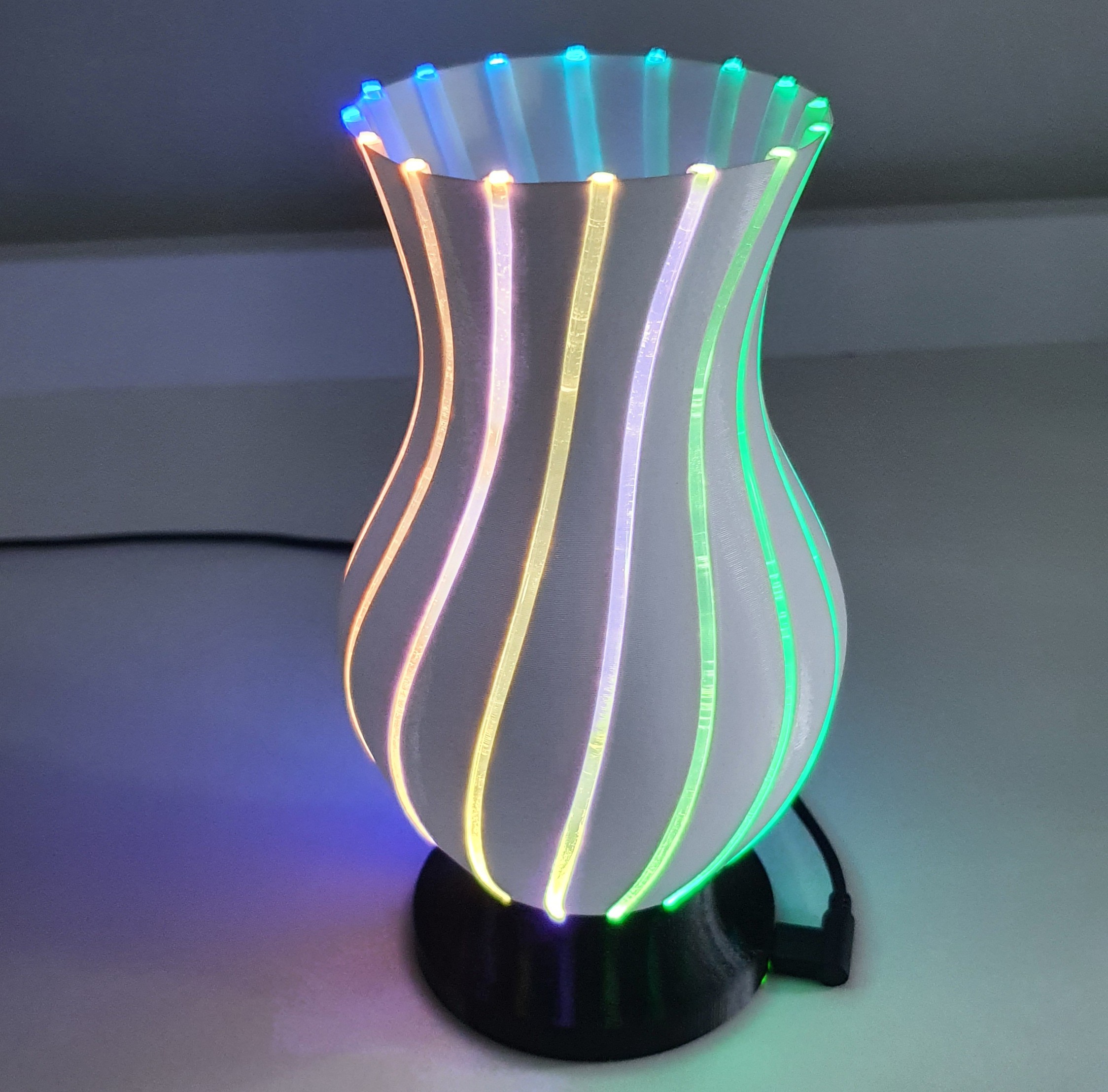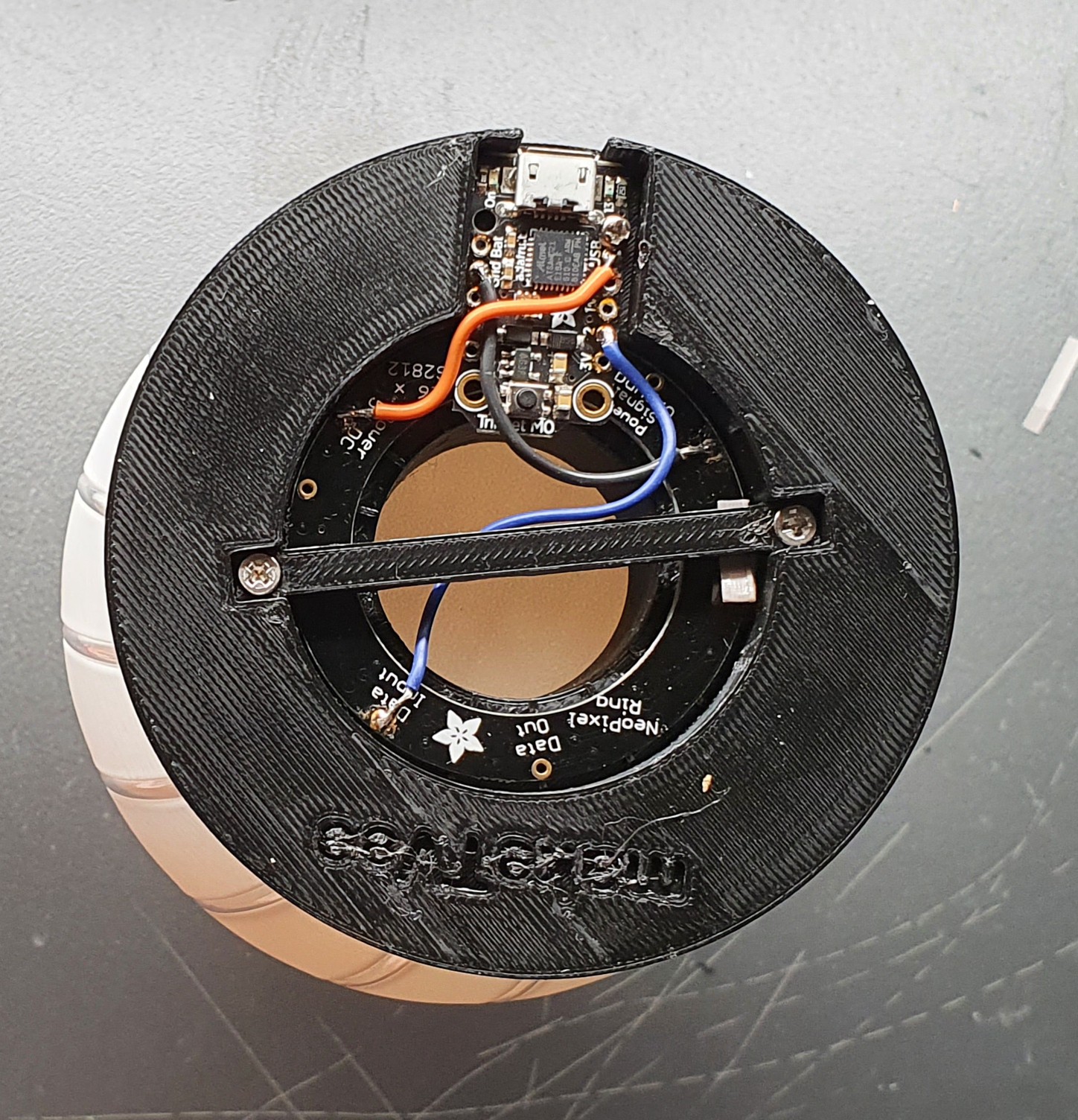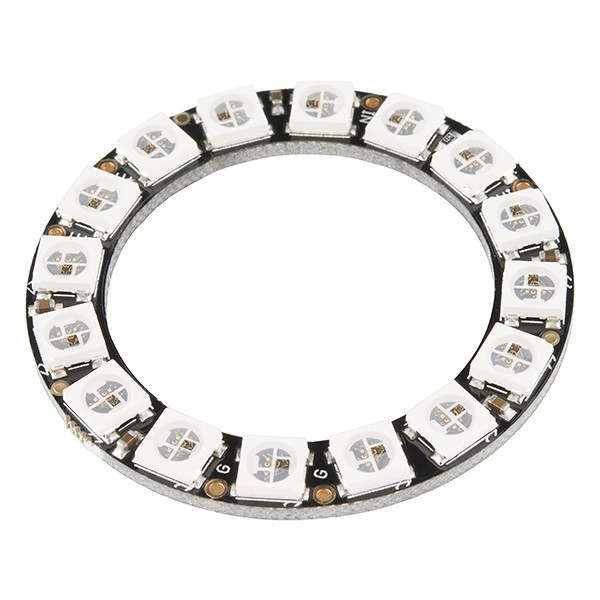
That's my first test of using standard transparent 3D filament as a light guide for addressable LEDs. First results with 1.75 mm filament were not satisfying, because the LED opening of standard WS2812 (Neopixel) LEDs is around 3 mm and not all light is coupled into the filament.
So the next test was using 2.85 mm filament, which worked much better. I tested PETG and PLA and both are working fine, but PETG is more transparent and depending on the project, you want to have more diffusion (PLA) for short traces or longer light guiding (PETG). For this vase I used PETG.
The filament pieces end up in the black base, were the LED ring is integrated and controlled by a tiny Arduino board.

A standard 16 pixel Neopixel ring was used and the vase was designed according to its pattern:

 makeTVee
makeTVee
Discussions
Become a Hackaday.io Member
Create an account to leave a comment. Already have an account? Log In.
That's pretty! 👍
Are you sure? yes | no